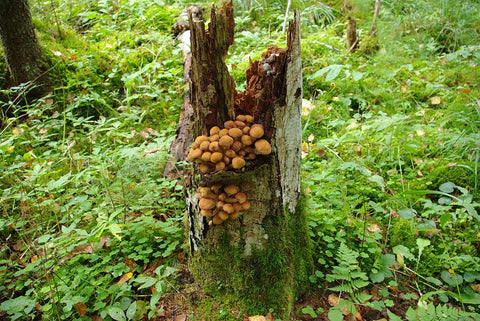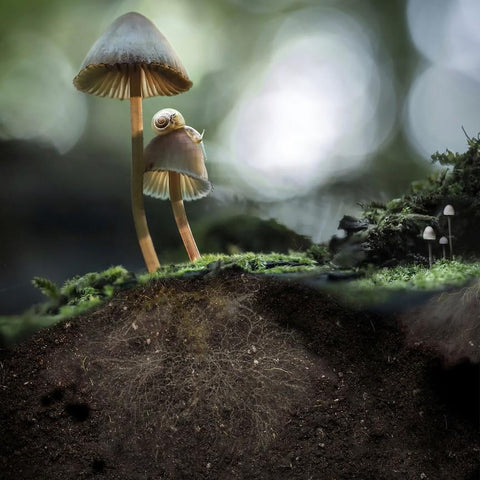No, I am not just rhyming for the sake of rhyming, there is in fact a gigantic fungus living in Malheur National Park in Oregon, said to be the largest living organism on the whole entire planet!
And again no, I am not talking about a 30 meter tall mushroom that you could actually live in... Although that would be really cool. I am talking about the honey fungus, scientifically known as Armillaria solidipes or ostoyae, which predominantly lives underground (boring), only will you see the yellowish-brown mushrooms at the base of trees once a year and this is just the tip of the iceberg. It spreads its mycelia (tubular filaments) underneath the ground and uses its black shoestring like filaments called rhizomorphs to search for new hosts to live off.
Although the honey fungus sounds kind of cute, it’s actually a serial tree killer. It uses the rhizomorphs to infect tree roots and leeches off their water and carbohydrates and actually interferes with the trees absorption. Subsequently killing the trees and causing them to decay, which is another great resource for the fungus, possibly why it has been so successful at spreading so far.
It was actually the death and decay of the trees in this forest which led to the discovery of the enormous fungus. Scientist from the US forest service were concerned about the die-off of trees in this particular area. They collected root samples from 112 trees that were dying or already dead and found that 108 trees from that sample had been infected with honey fungus.
It wasn’t until they undertook some lab tests that they realised that 56% of the trees had been infected and killed by the same clonal colony of mycelia i.e. individual mycelia with identical genetic material that all originated from one organism, thus forming one mega organism.
They discovered that the widest space between two trees that had suffered the wrath of identical mycelia were 3.8km apart and after creating an aerial map of all infected trees by the same colony they calculated that this particular honey fungus covered an area of 9.6 square kilometres, in context, that is around 1,665 football fields!
Forget about the blue whale and redwood trees, humungous fungus is where it’s at!
References
http://www.bbc.com/earth/story/20141114-the-biggest-organism-in-the-world





Comments (0)
There are no comments for this article. Be the first one to leave a message!